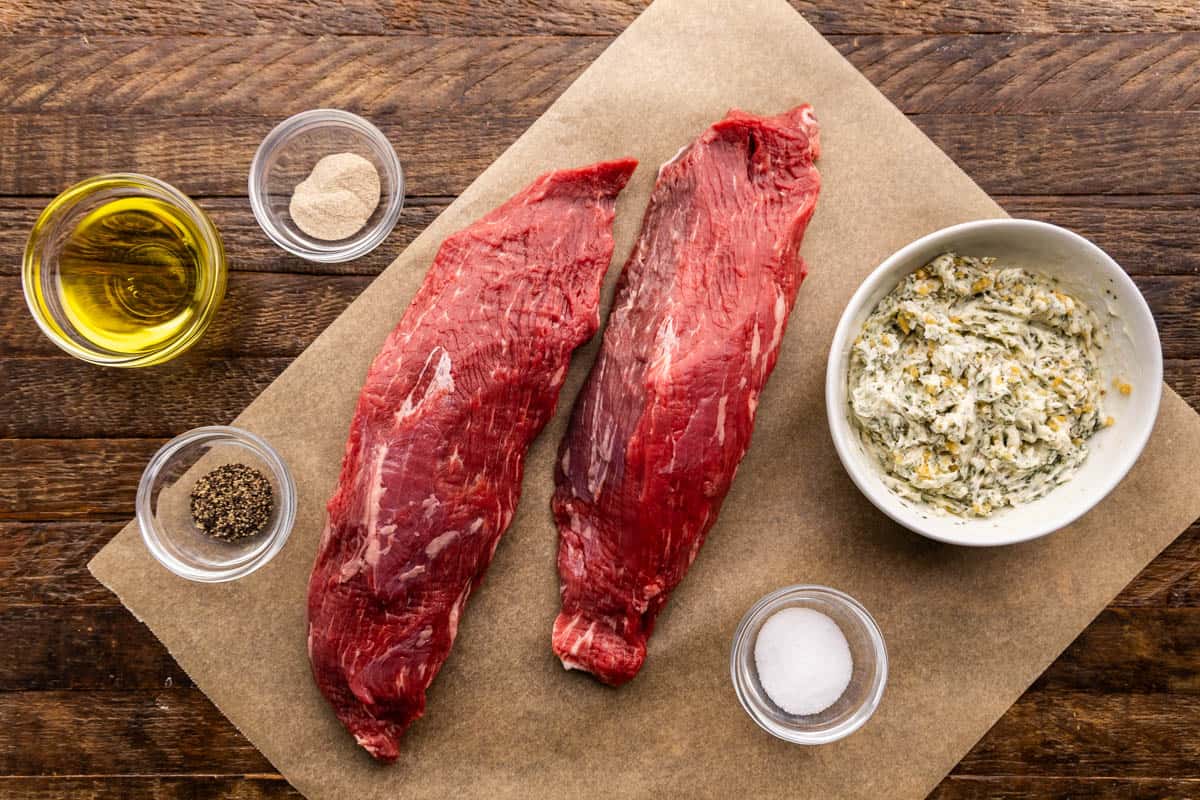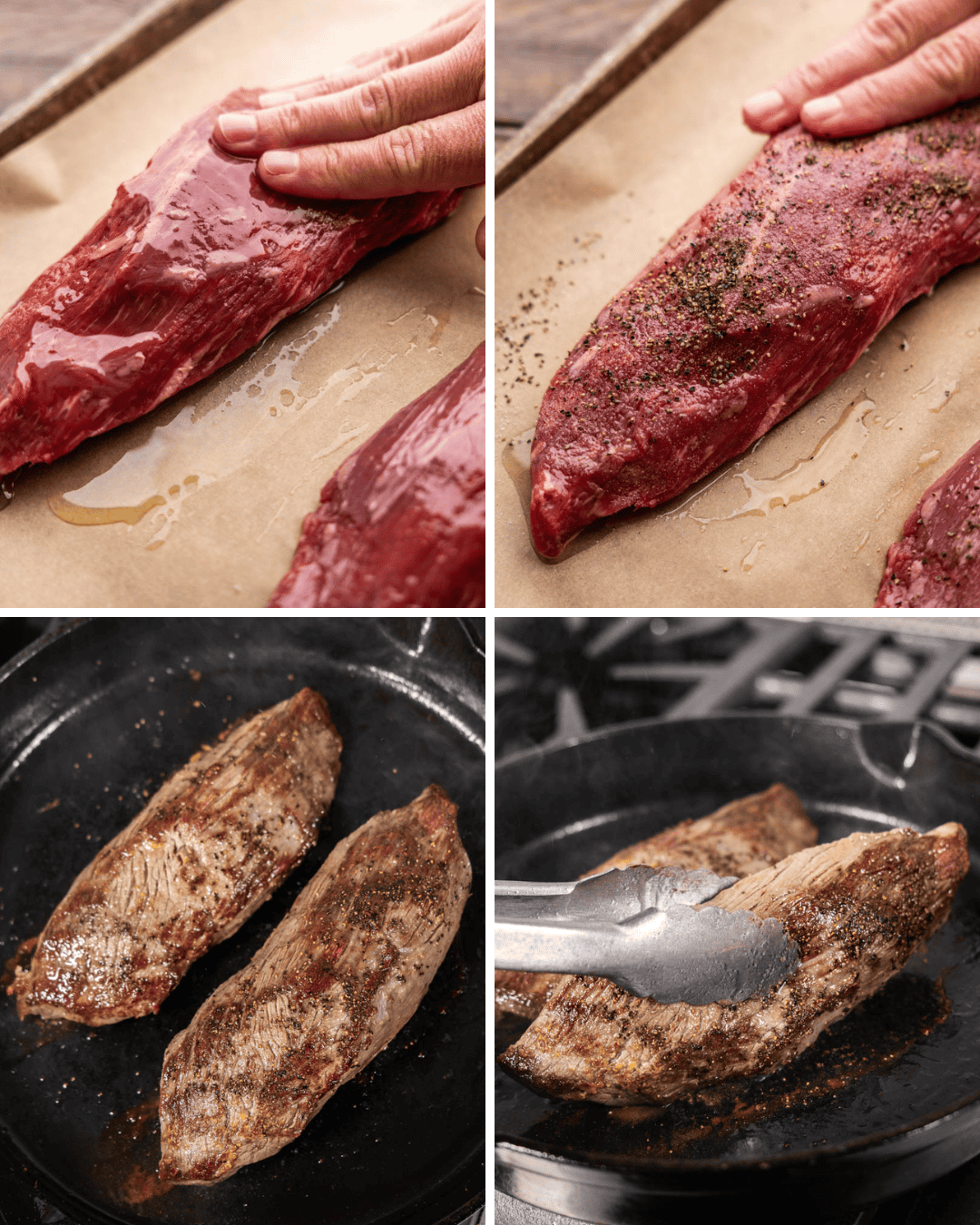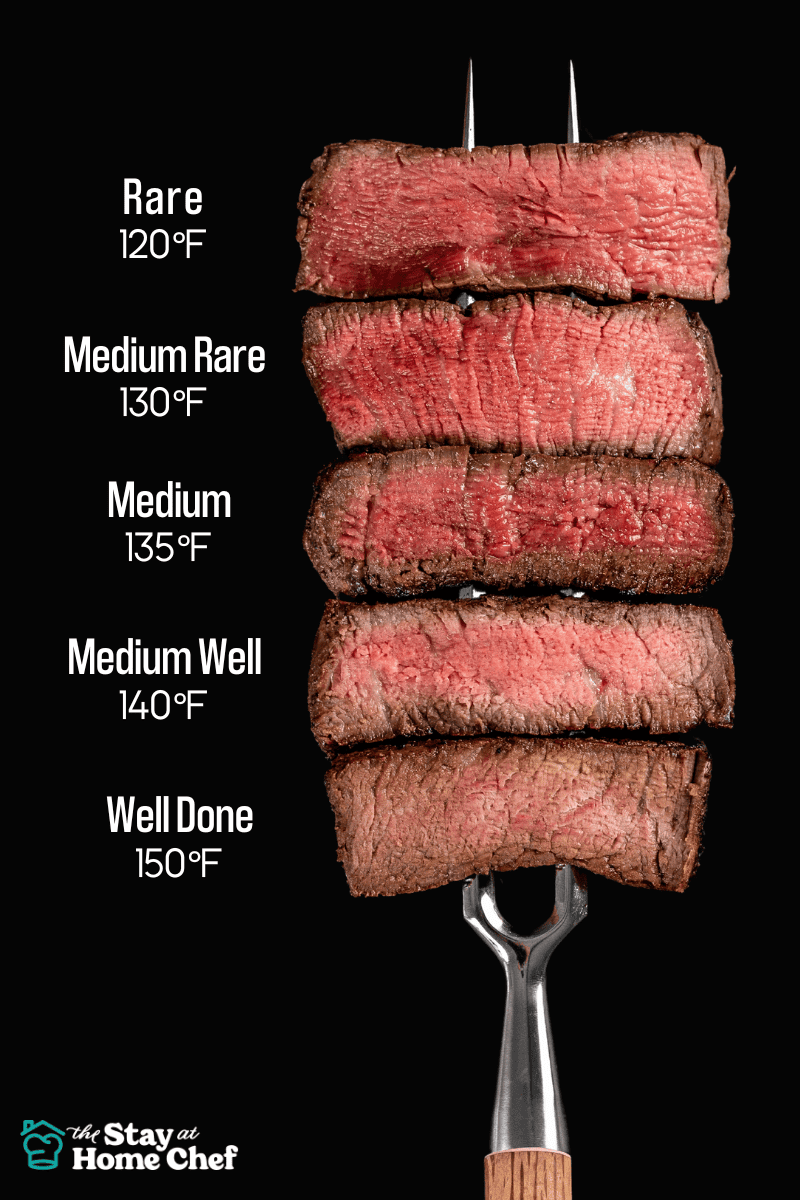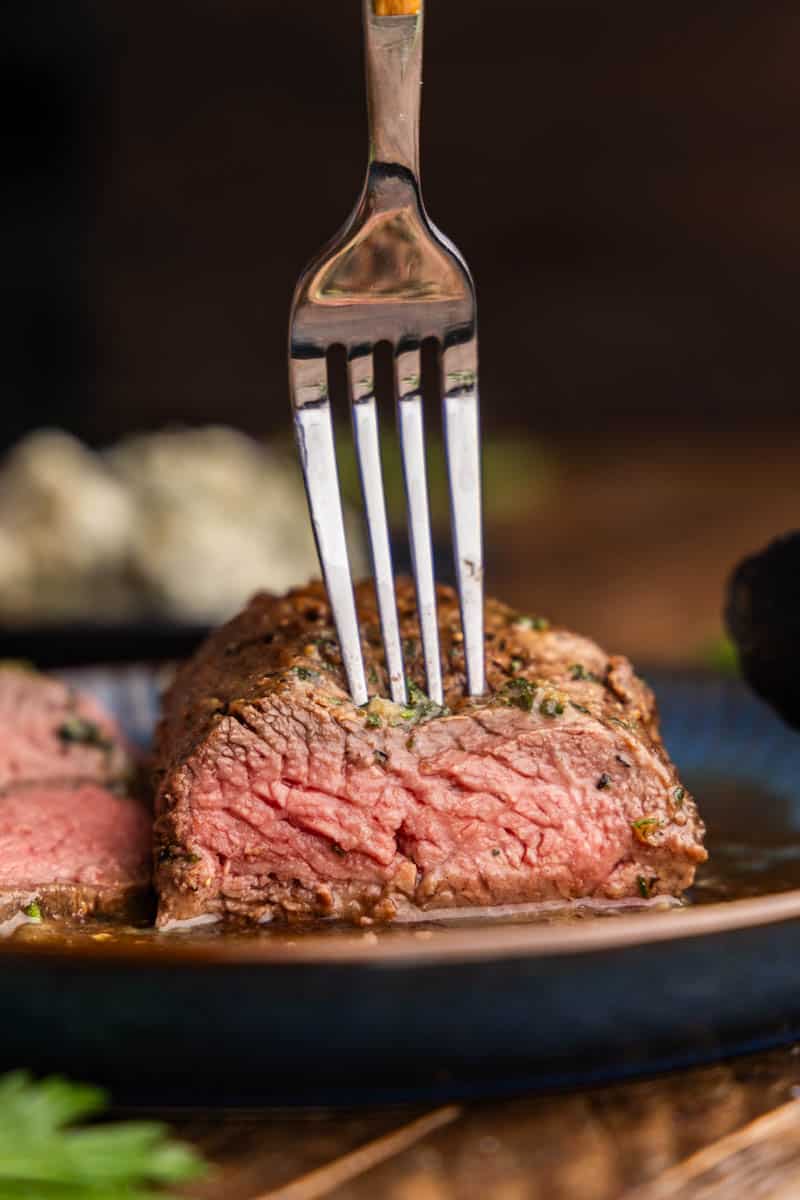This lesser-known cut is starting to take its rightful place on the stage. There is no gristle or sinew- just a perfect bite from start to finish. We take you step-by-step for juicy, tender steaks every time. With our simple process you will be grilling a delicious petite tender steak like a pro.
Check out our Roasted Asparagus or our Steakhouse Style Garlic Mashed Potatoes to make it a meal.
Why Our Recipe
- Foolproof step-by-step instructions for this delicious cut.
- Tried and tested recipe by a certified steak expert.
This cut reminds us of a mini beef tenderloin and a tri-tip combined. I made a bunch of them for my husband’s birthday and I was so impressed! If you don’t find them at your local grocery store, ask your butcher and see if he can butcher some for you. This cut is also known as bistro filet or teres major.
Ingredient Notes

- Petite tender steaks: Because this steak doesn’t have two flat sides, make sure to sear all of its edges. It may look large, but it will shrink 30-40% as it cooks.
- Olive Oil: This allows the seasoning to stick to the steak.
- Seasonings: These enhance the natural beef flavor without covering it up.
- Resting Butter: This adds a lot of flavor to your steak. You can use our resting butter recipe, plain butter, or add a kick of heat with our cowboy butter.
When to Flip
Don’t flip the steak until a beautiful brown crust has been created. Those crusts have a dimensional flavor profile that adds so much to the experience of the overall steak. You’ll know when to flip when the steak releases easily from the pan.

Steak Doneness
The chef’s standard level of doneness is medium-rare. At this point it will be tender, and juicy, and if you do it just right the steak will melt in your mouth. Every steak has a different cooking time due to the varying thicknesses of the cuts.
Instant-Read Thermometers
Using an instant-read thermometer is far and away the best option for ensuring accuracy. It takes the guesswork out of determining doneness, ensuring your steak is cooked exactly to your preference. To use it, simply insert the probe into the thickest part of the steak, avoiding any bones or fat. The thermometer will give an accurate reading in seconds, letting you know if your steak has reached the desired internal temperature. Just try not to poke too many holes in your steak as you’ll notice when you do so that juices run out.

Cooking Steaks By Feel: “The Thumb Test”
Not everyone has an instant-read thermometer and we understand. With time and experience you can learn to judge a steak’s level of doneness by feel alone. We’ll go over “the thumb test”, but just note that it is very difficult to master cooking steaks by touch.
- Rare should feel very soft and yielding. Lightly touch your thumb to your index finger and feel the fleshy area under your thumb. It should feel very soft, similar to the feel of raw meat.
- Medium-Rare should feel soft with a bit of resistance. Lightly touch your thumb to your middle finger and feel the same area under your thumb. It should feel slightly firmer, but still soft.
- Medium should feel firm but with some give. Lightly touch your thumb to your ring finger and feel the area under your thumb. It should feel firmer and more springy.
- Medium-Well should feel firm with very little give. Lightly touch your thumb to your pinky finger and feel the area under your thumb. It should feel quite firm with very little softness.
- Well-Done should feel very firm with no give. Squeeze your thumb to your palm tightly and feel the area under your thumb. It should feel very firm, similar to well-done meat.

Dry Brining
You can salt the steak up to 12 hours in advance. This is known as the dry brining method which can significantly enhance the flavor of the steak and make them more tender. The salt penetrates deep into the meat, seasoning it throughout. This process also helps the steak retain moisture during cooking, leading to a juicier final product. Additionally, the salt breaks down some of the muscle proteins, making the meat more tender. A petite tender is already quite soft so while you can still use the dry brining technique, it is certainly not required.
Storage and Reheating Instructions
Refrigerate leftovers in an airtight container for up to 5 days.
Reheat portions in a skillet over medium heat or wrap in aluminum foil to retain moisture and reheat in a 300-degree oven for 10 to 15 minutes, just until warmed through.
Trending Products

GE Electronic Window Air Conditioner 6000 BTU, Efficient Cooling for Smaller Areas Like Bedrooms and Guest Rooms, 6K BTU Window AC Unit with Easy Install Kit, White

Alen BreatheSmart Classic H13 HEPA Air Purifier, Air Purifiers For Home Large Room w/ 1100 SqFt Coverage, Medical-Grade Air Cleaner for Pet Dander & Odor, up to 12 Mos. Filter Life, Espresso

Luminance Midway Eco LED Ceiling Fan with Light and Remote | Dimmable 54 Inch Fixture with DC Motor | Contemporary 5 Blade Design with Downrod Mount for Hanging, Appliance White

Nostalgia RF6RRAQ Retro 6-Can Personal Cooling and Heating Mini Refrigerator with Carry Handle for Home Office, Car, Boat or Dorm Room-Includes AC/DC Power Cords,,1 cubic feet, Aqua











